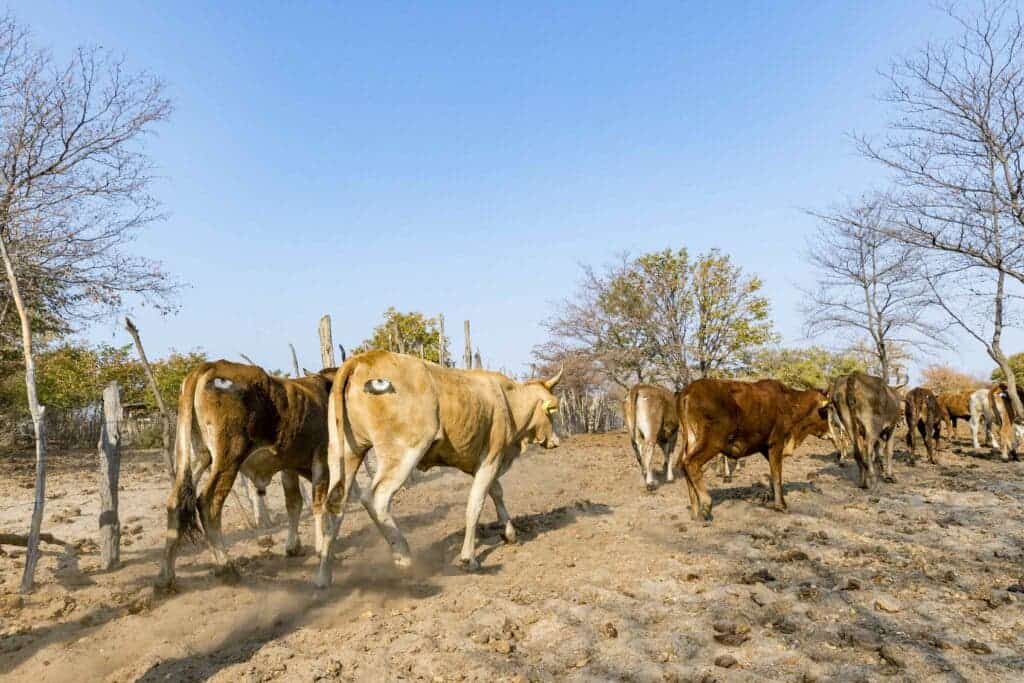Farmers in Botswana have long been used to lions and other predators attacking their cows every once in a while. But there might be a simple solution, according to a new study. It’s a bit weird, but it can work. Hear me out.

No butt of a joke
The researchers described a new method in which they paint eyes on the back of cows — on their butts, basically. This works as a humane alternative to using lethal control and is also cheaper and more eco-friendly than using fencing to separate the cows from the predators.
It’s simple, it’s cheap, painless, and it can be surprisingly effective, the researchers note.
“Lions are ambush predators that rely on stalking, and therefore the element of surprise, so being seen by their prey can lead to them abandoning the hunt,” said researcher Neil Jordan in a press release. “We tested whether we could hack into this response to reduce livestock losses, potentially protecting lions and livelihoods.”
Jordan partnered up with the Botswana Predator Conservation Trust (BPCT) and did a ten-week pilot study with a local farmer. They painted eyes on one-third of the 62 cows and counted the cattle every night to see how many had survived. Surprisingly, only three were killed during that period, none of which had painted eyes. The lions seemed to avoid the eye-butt cows.
The results encouraged Jordan to expand his research, carrying out a four-year study. He and his team worked with farmers from the Okavango delta region, taking a sample of over 2,000 animals from 14 herds.
They used acrylic paint, black and white or yellow, and applied it with foam stencils in the shape of an eye, clearly visible to the predator.
The researchers painted the eye patterns in one-third of the cattle, while another third only got cross-marks and another third wasn’t unmarked. The cattle painted with the eyespots were much likely to survive than unpainted or cross-painted in the same herd. In fact, no cows that had been painted with eyes were killed during the four-year study, which is a remarkable achievement in itself.
“Cattle marked with simple crosses were significantly more likely to survive than were un-marked cattle from the same herd. Although eye-marked cattle were more likely to survive than the other groups, this general ‘conspicuousness’ effect suggests that novel cross-marks were better than no marks at all, which was unexpected,” Jordan said.
Helping both farmers and lions
As well as publishing a paper with their findings, the researchers have also done practical guides to the ‘eye-cow’ technique in both English and Setswana. They hope farmers will take up this simple tool but they stress that it is important to understand the potential limitations in its use, and choose for themselves. Essentially, the method is not perfect, but it can indeed help.
There are still some unknowns. Jordan explained that in the experimental design there were always unmarked cows in the heard, which means it’s unclear whether the painting would still be effective if those cows weren’t there.
Another thing to consider is habituation, as predators might get used to the deterrent and eventually ignore it — just because it works no, it’s not a guarantee that it will work 10 years from now..
The African lion population has in fact dropped from 100,000 in the 1990s to between 23,000 and 39,000 in 2016, with farmer retaliation playing an important role with that. Understandably, local farmers want their animals safe, but conservationists have been looking for ways to reduce conflicts for a long time. Now, they finally have a tool they can at least trial in these dicey situations.
The study was published in the journal Communications Biology.


